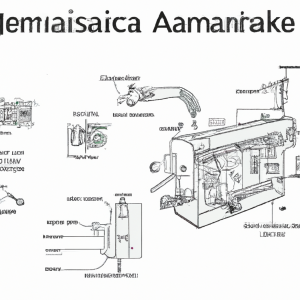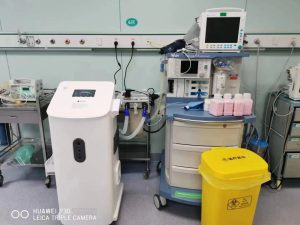Essential Steps for Proper Cleaning and Disinfection of Anesthesia Machines
The anesthesia machine is a crucial device that aids in ensuring safe anesthesia for patients during surgical procedures. Just like any medical equipment, proper cleaning and disinfection of the anesthesia machine's internal components are vital to prevent the spread of infectious pathogens and maintain patient safety. Here are some basic steps for disinfecting the interior of an anesthesia machine:
-
- Shut down the machine and disconnect it from any power sources.
- Disassemble the machine and remove all detachable parts. This includes the breathing circuit, soda lime canister, and any other accessories.
- Clean the exterior of the machine using hospital-grade disinfectant wipes or sprays. Pay special attention to high-touch areas such as control panels, knobs, and switches.
- Thoroughly clean the interior of the machine. Wipe all surfaces, including the flow sensor, pressure gauge, and other components, with a lint-free cloth dipped in a disinfectant solution.
- Inspect the breathing circuit for any visible debris and discard any used or contaminated components. Replace any disposable components of the breathing circuit according to the manufacturer's instructions.
- Disinfect any reusable components of the breathing circuit, such as tubes, masks, and filters. Use approved methods like high-pressure sterilization or gas sterilization and follow the manufacturer's instructions.
- Replace the soda lime canister used to absorb carbon dioxide from exhaled air, following the manufacturer's instructions.
- Reassemble the machine and perform a leak test to ensure all components are properly connected and functioning correctly.
- Finally, conduct a functional check of the machine to ensure its proper operation. This includes verifying the functionality of the flow sensor, pressure gauge, and other components.
It is important to note that proper cleaning and disinfection of the anesthesia machine's interior should be performed after each use to reduce the risk of infection. Additionally, it is essential to follow the manufacturer's instructions for machine cleaning and disinfection, as well as any hospital or regulatory guidelines.

Anesthesia machine disassembly diagram and labeling
In summary, cleaning and disinfection of the anesthesia machine's interior are crucial for maintaining patient safety and preventing the spread of infectious pathogens. Proper cleaning and disinfection procedures should be followed after each use, and any disposable or reusable components of the machine should be inspected, disinfected, or replaced as needed. By adhering to these guidelines, healthcare providers can help ensure the anesthesia machine operates correctly and safely for each patient.
Comparison: Cleaning the Interior of Anesthesia Machines vs. Respiratory Circuit Disinfection Machines
While routine cleaning methods for anesthesia machines only cover external disinfection, specialized anesthesia respiratory circuit disinfection machines offer several advantages:
-
- Traditional disinfection methods only address external cleaning of anesthesia machines and respiratory devices. Research has shown that these devices can harbor significant amounts of pathogenic bacteria internally. Incomplete disinfection can lead to cross-contamination, highlighting the need for thorough internal disinfection.
- To achieve comprehensive internal disinfection, traditional methods often involve dismantling the machine and sending its components to a central supply room for disinfection. This process is complex, time-consuming, and can potentially damage the equipment. Moreover, it requires specialized personnel and can disrupt clinical workflows due to the remote location, long disinfection cycles, and intricate procedures involved.
- On the other hand, using anesthesia respiratory circuit disinfection machines simplifies the disinfection process. These machines require only the connection of the circuit and can run automatically, providing convenience and efficiency.

Anesthesia circuit sterilizer being sterilized
In conclusion, routine cleaning and disinfection methods for anesthesia machines focus primarily on external surfaces, while specialized anesthesia respiratory circuit disinfection machines offer a more efficient and comprehensive solution for internal disinfection. The latter eliminates the need for complex dismantling and allows for convenient and quick disinfection processes.